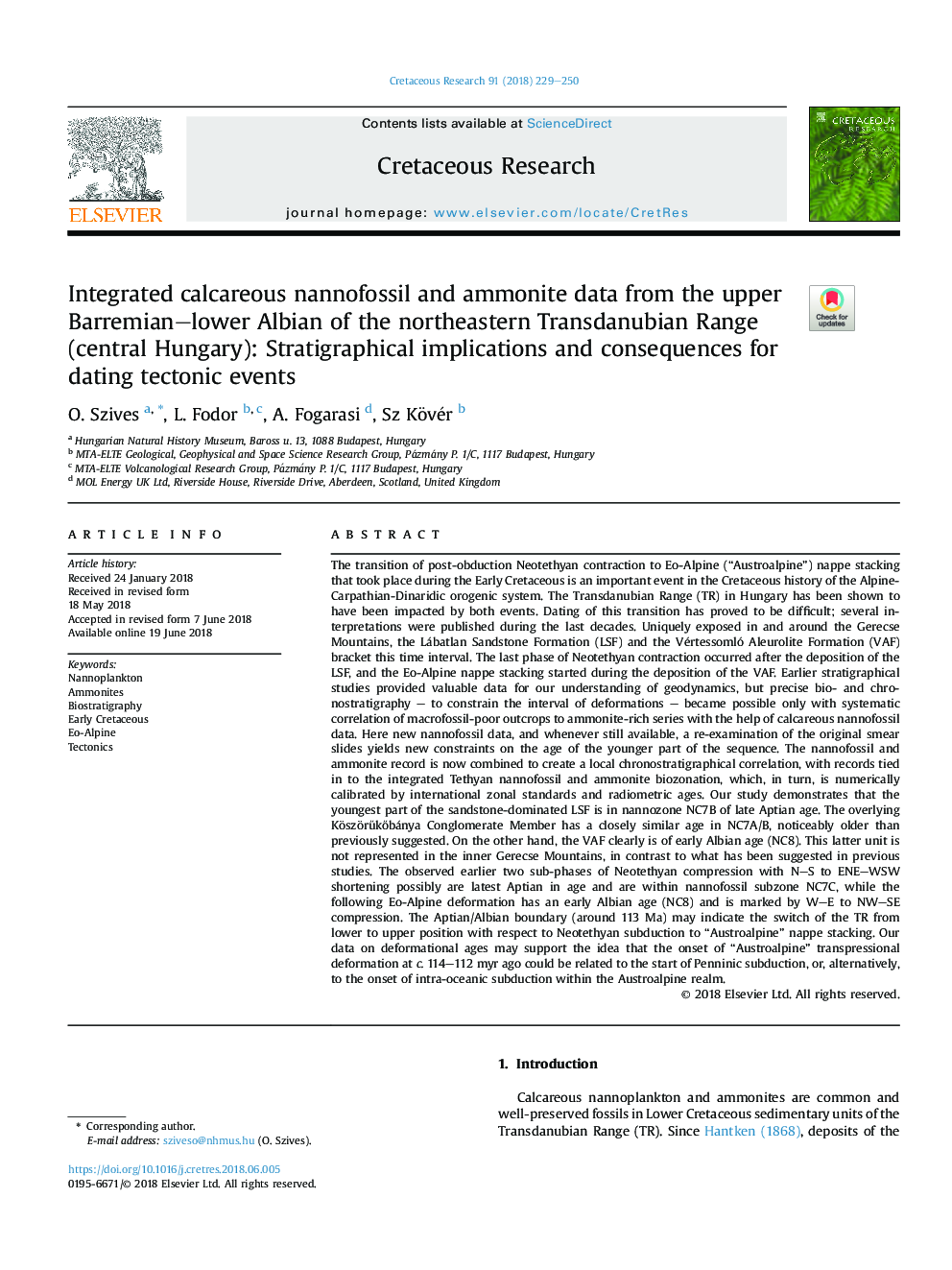| کد مقاله | کد نشریه | سال انتشار | مقاله انگلیسی | نسخه تمام متن |
|---|---|---|---|---|
| 8916162 | 1642032 | 2018 | 22 صفحه PDF | دانلود رایگان |
عنوان انگلیسی مقاله ISI
Integrated calcareous nannofossil and ammonite data from the upper Barremian-lower Albian of the northeastern Transdanubian Range (central Hungary): Stratigraphical implications and consequences for dating tectonic events
دانلود مقاله + سفارش ترجمه
دانلود مقاله ISI انگلیسی
رایگان برای ایرانیان
کلمات کلیدی
موضوعات مرتبط
مهندسی و علوم پایه
علوم زمین و سیارات
فسیل شناسی
پیش نمایش صفحه اول مقاله

چکیده انگلیسی
The transition of post-obduction Neotethyan contraction to Eo-Alpine (“Austroalpine”) nappe stacking that took place during the Early Cretaceous is an important event in the Cretaceous history of the Alpine-Carpathian-Dinaridic orogenic system. The Transdanubian Range (TR) in Hungary has been shown to have been impacted by both events. Dating of this transition has proved to be difficult; several interpretations were published during the last decades. Uniquely exposed in and around the Gerecse Mountains, the Lábatlan Sandstone Formation (LSF) and the Vértessomló Aleurolite Formation (VAF) bracket this time interval. The last phase of Neotethyan contraction occurred after the deposition of the LSF, and the Eo-Alpine nappe stacking started during the deposition of the VAF. Earlier stratigraphical studies provided valuable data for our understanding of geodynamics, but precise bio- and chronostratigraphy - to constrain the interval of deformations - became possible only with systematic correlation of macrofossil-poor outcrops to ammonite-rich series with the help of calcareous nannofossil data. Here new nannofossil data, and whenever still available, a re-examination of the original smear slides yields new constraints on the age of the younger part of the sequence. The nannofossil and ammonite record is now combined to create a local chronostratigraphical correlation, with records tied in to the integrated Tethyan nannofossil and ammonite biozonation, which, in turn, is numerically calibrated by international zonal standards and radiometric ages. Our study demonstrates that the youngest part of the sandstone-dominated LSF is in nannozone NC7B of late Aptian age. The overlying KöszörűkÅbánya Conglomerate Member has a closely similar age in NC7A/B, noticeably older than previously suggested. On the other hand, the VAF clearly is of early Albian age (NC8). This latter unit is not represented in the inner Gerecse Mountains, in contrast to what has been suggested in previous studies. The observed earlier two sub-phases of Neotethyan compression with N-S to ENE-WSW shortening possibly are latest Aptian in age and are within nannofossil subzone NC7C, while the following Eo-Alpine deformation has an early Albian age (NC8) and is marked by W-E to NW-SE compression. The Aptian/Albian boundary (around 113 Ma) may indicate the switch of the TR from lower to upper position with respect to Neotethyan subduction to “Austroalpine” nappe stacking. Our data on deformational ages may support the idea that the onset of “Austroalpine” transpressional deformation at c. 114-112 myr ago could be related to the start of Penninic subduction, or, alternatively, to the onset of intra-oceanic subduction within the Austroalpine realm.
ناشر
Database: Elsevier - ScienceDirect (ساینس دایرکت)
Journal: Cretaceous Research - Volume 91, November 2018, Pages 229-250
Journal: Cretaceous Research - Volume 91, November 2018, Pages 229-250
نویسندگان
O. Szives, L. Fodor, A. Fogarasi, Sz Kövér,